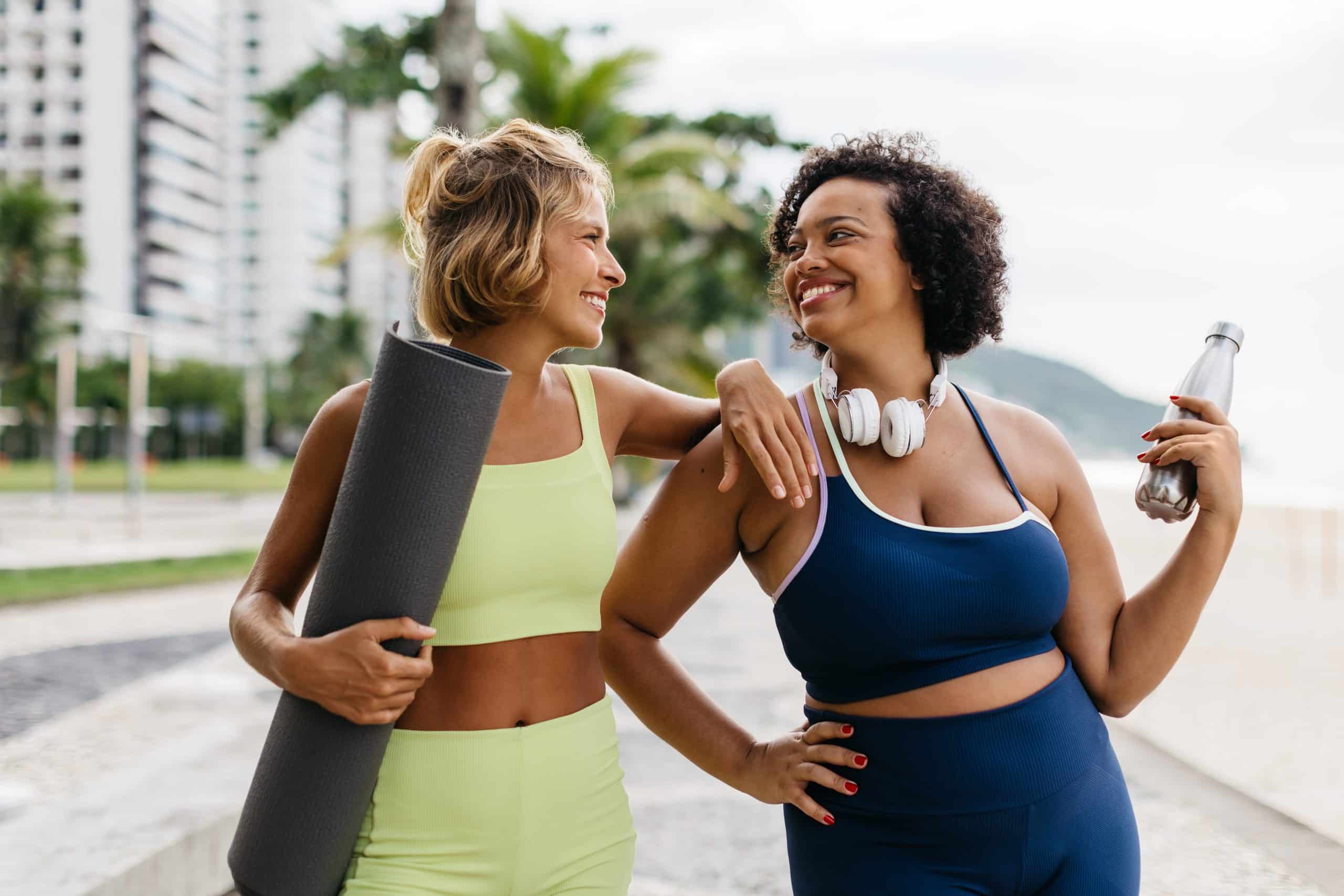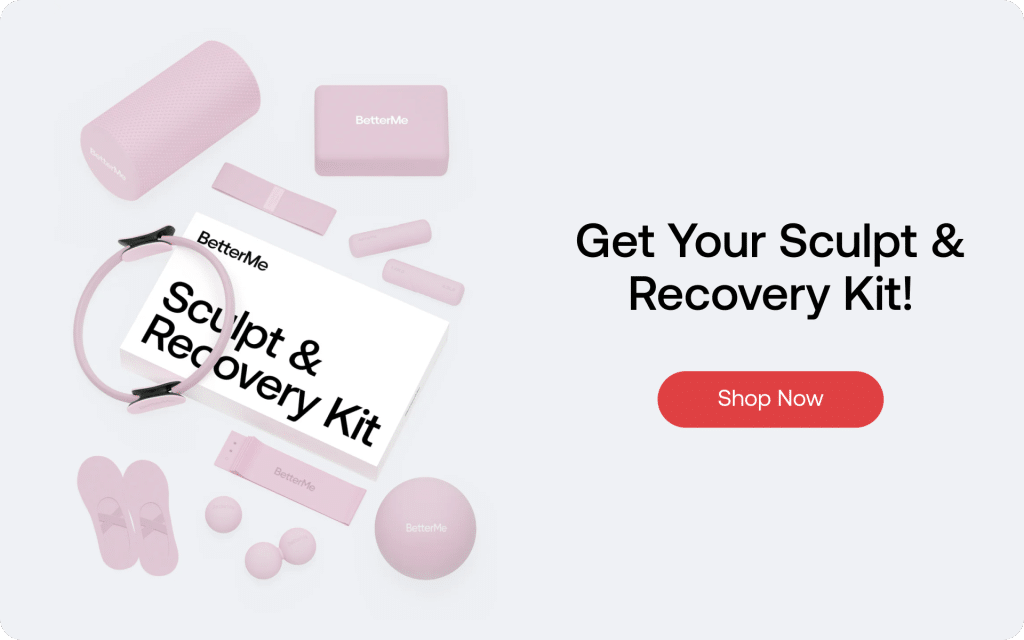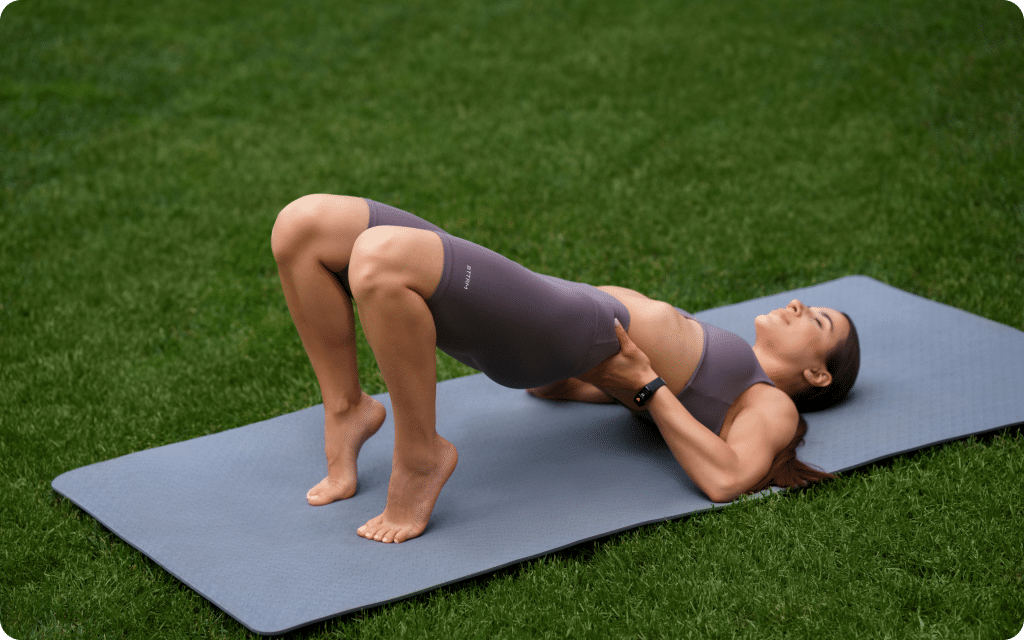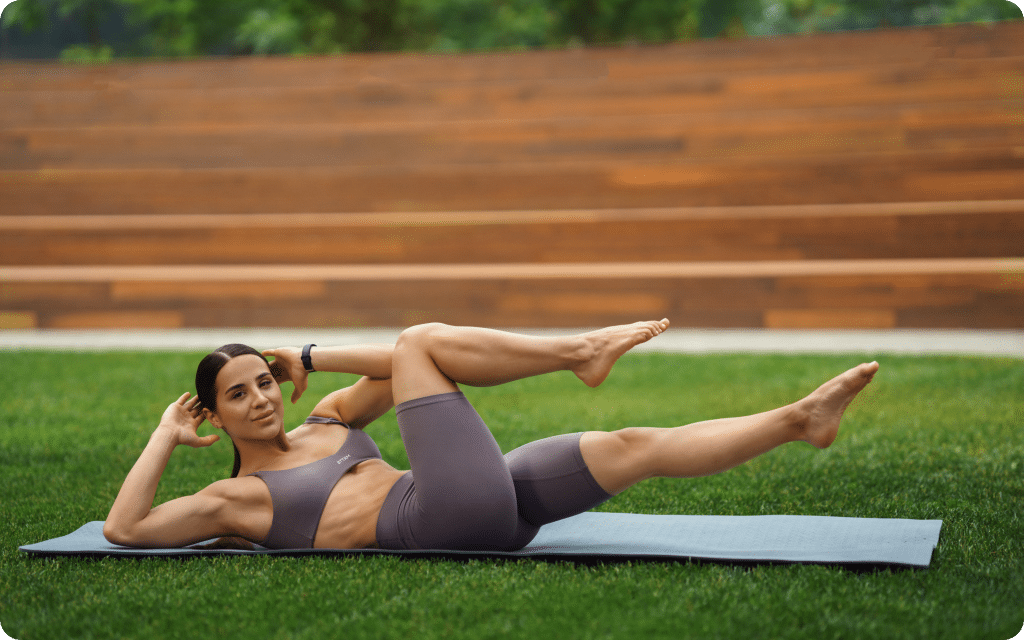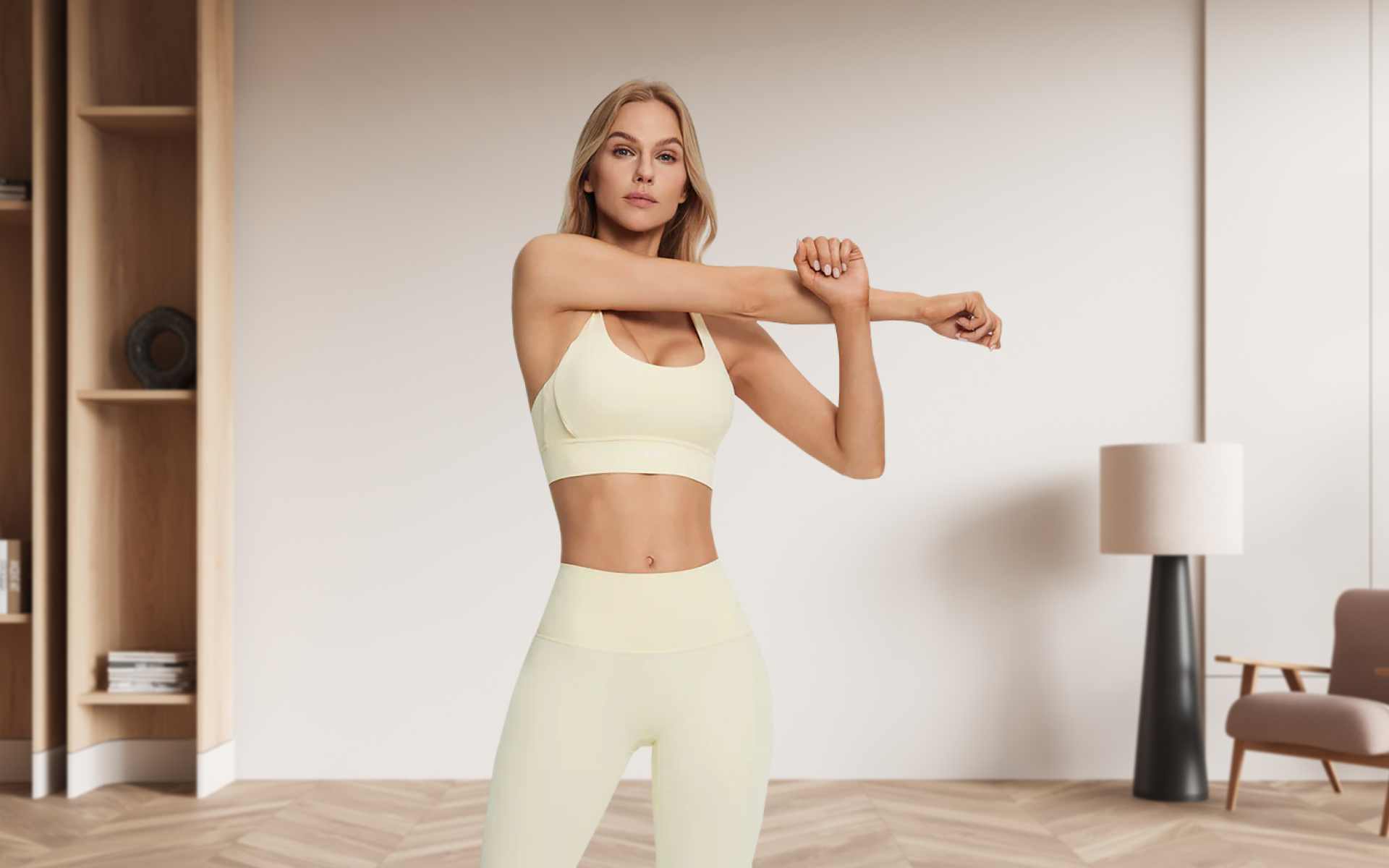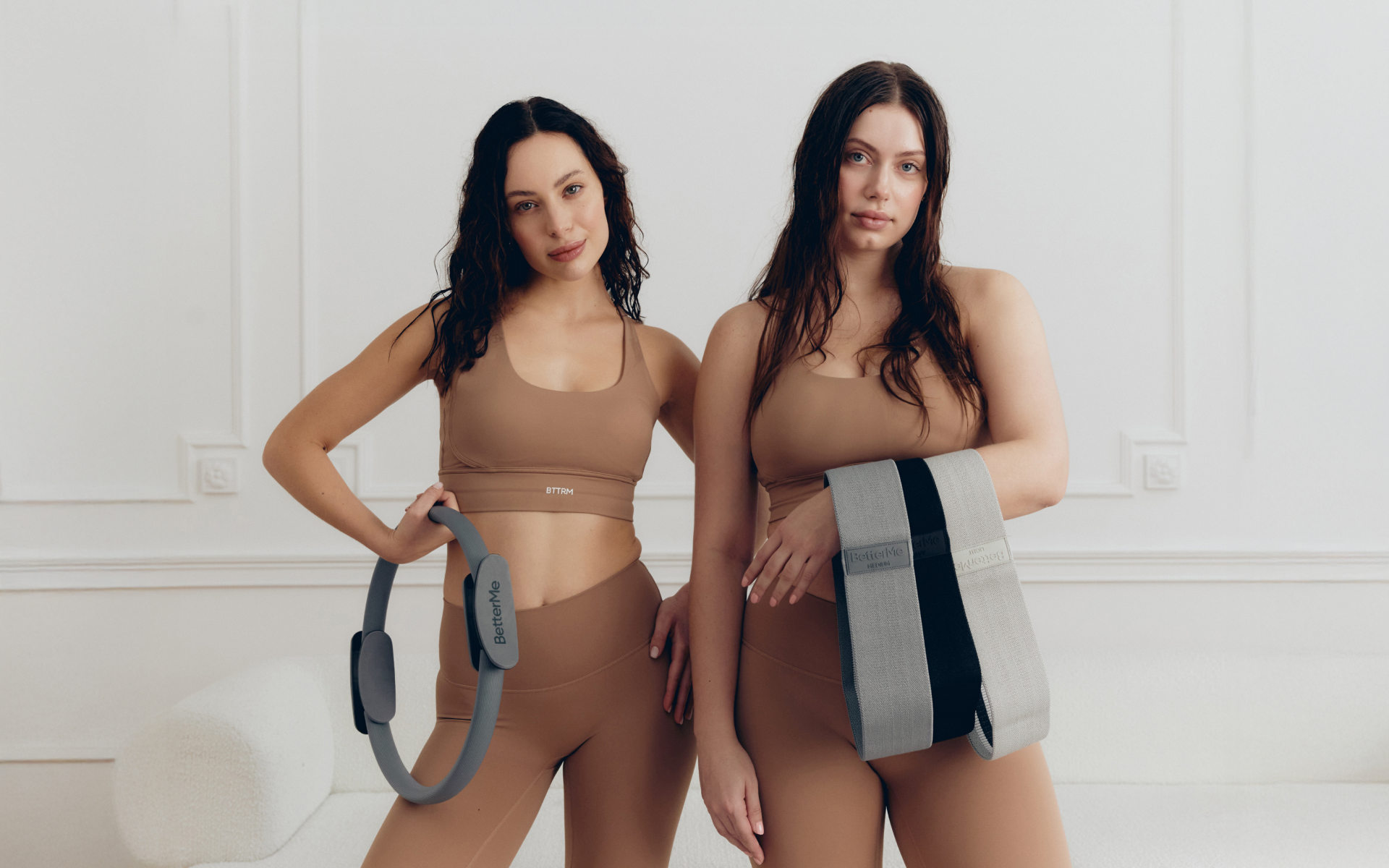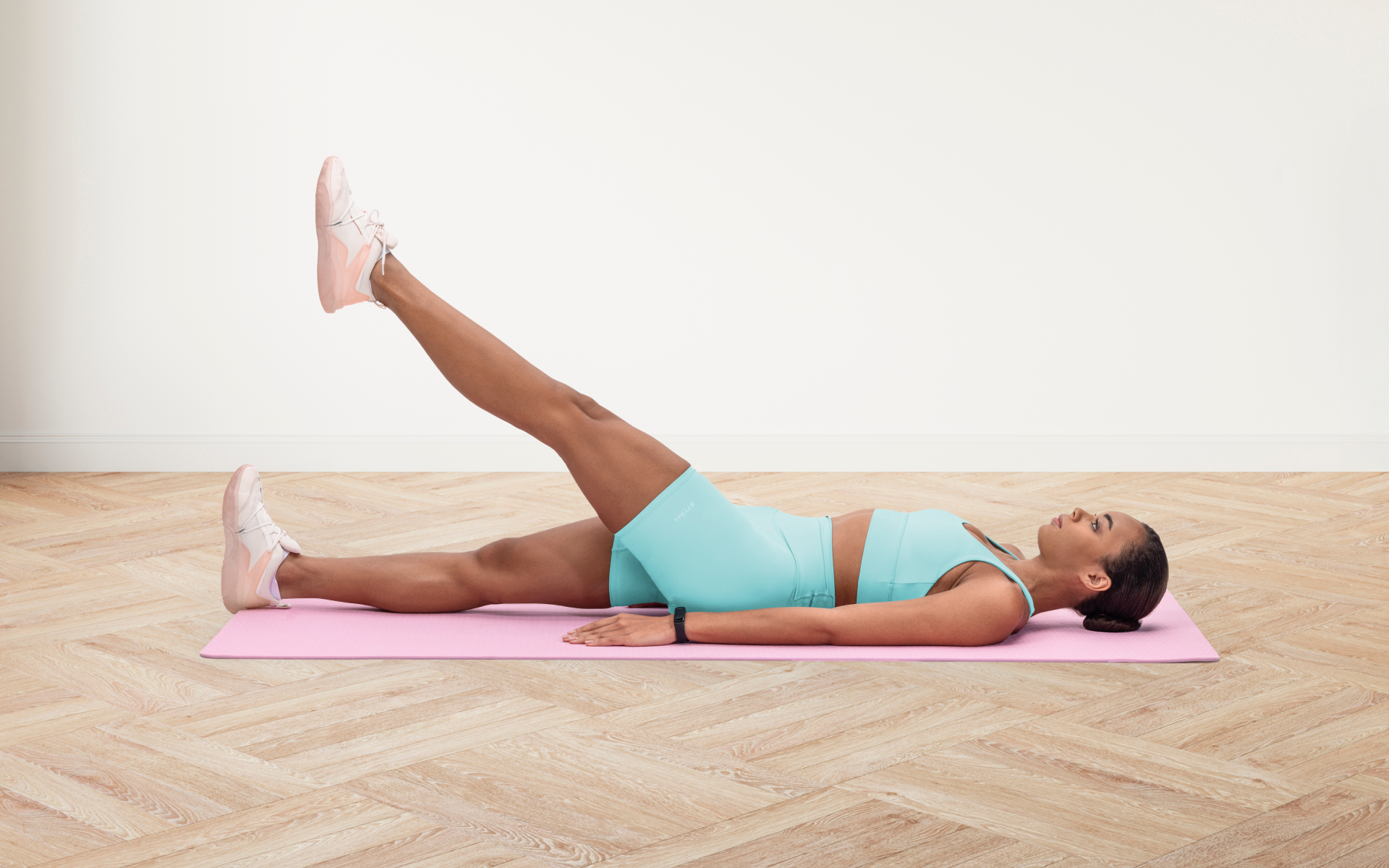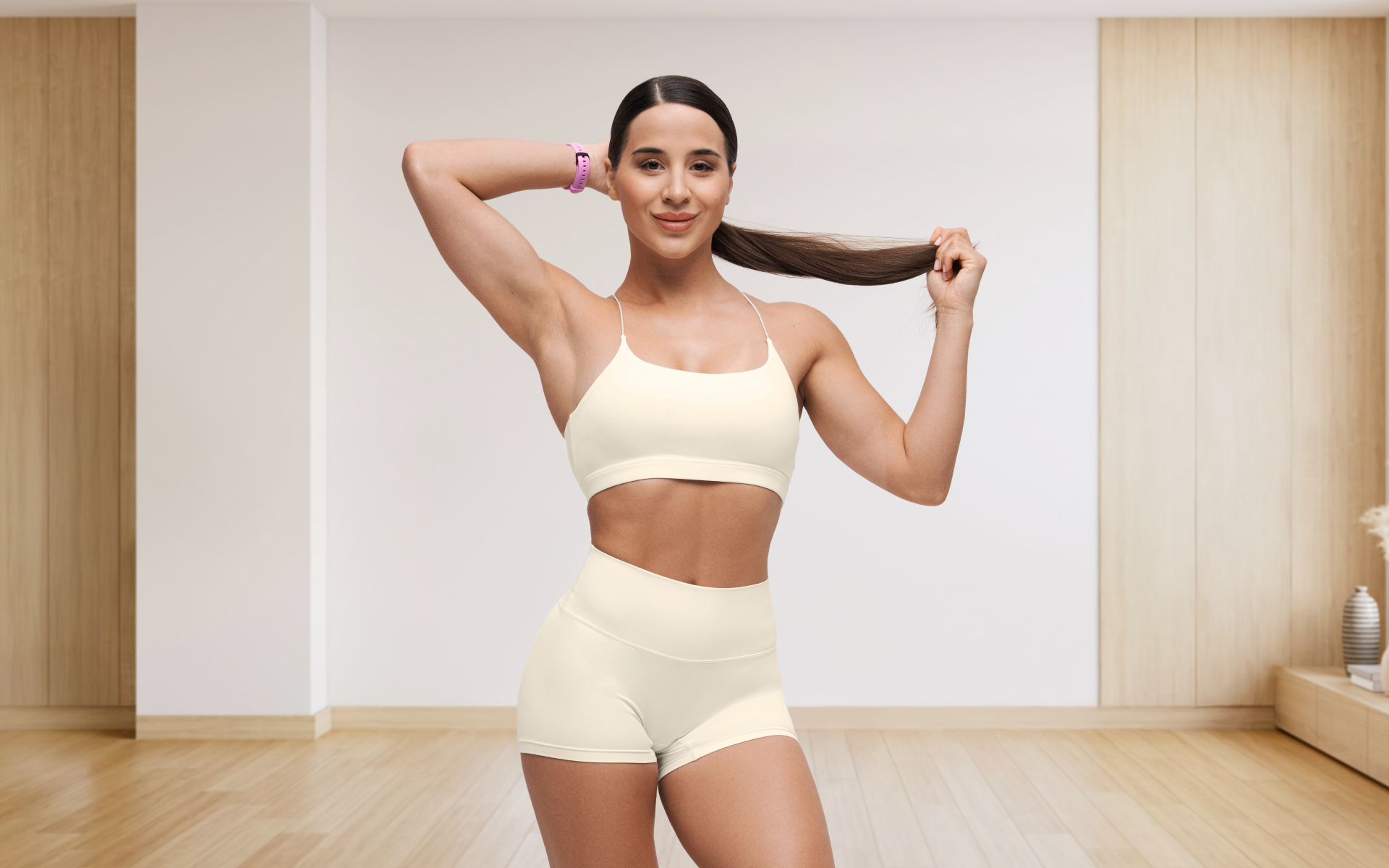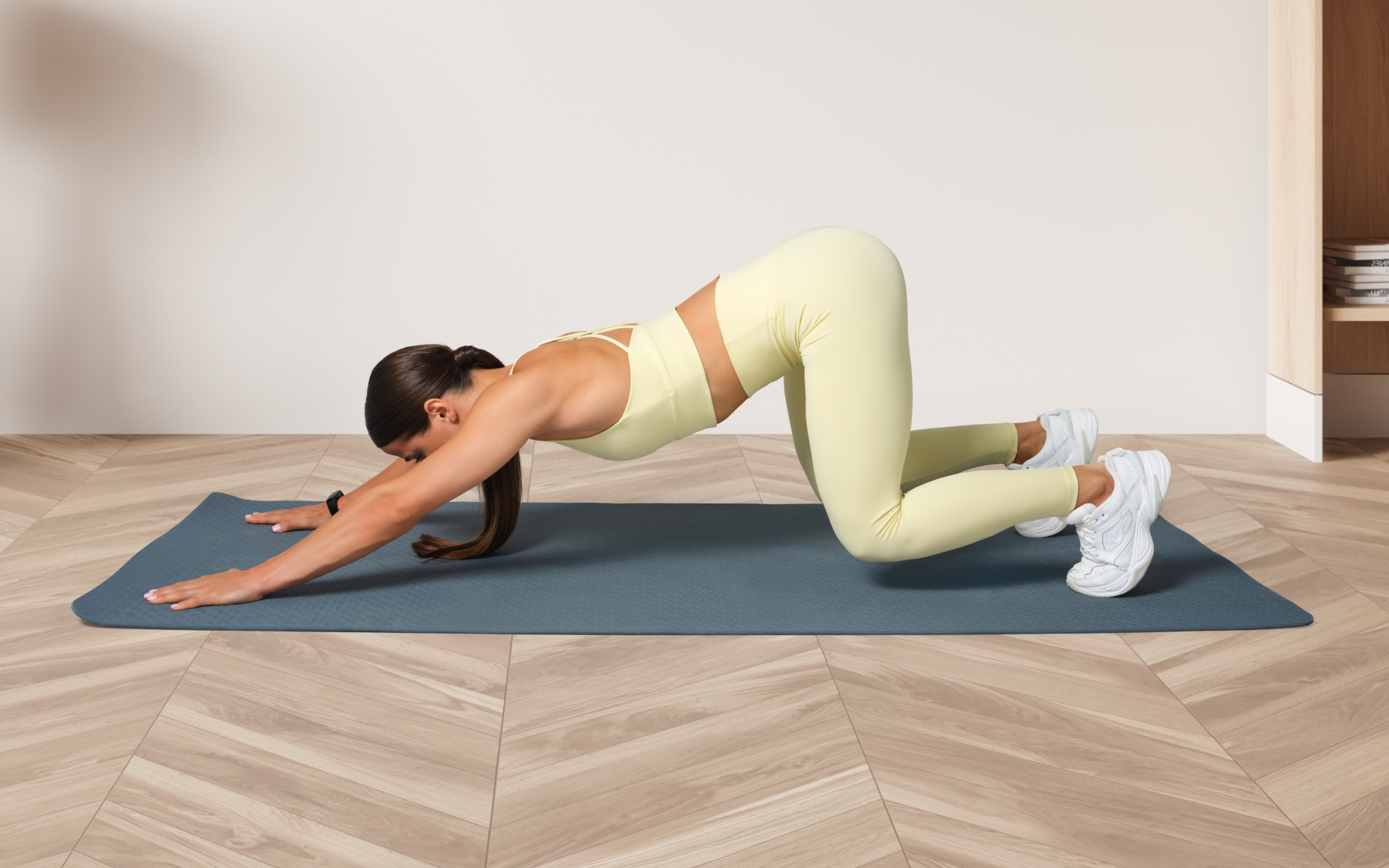Having belly fat (aka visceral fat) increases your risk of developing serious health conditions such as heart disease, type 2 diabetes, and certain types of cancer (1). According to the Centers for Disease Control and Prevention, more than one-third of adults in the United States are considered obese, which puts them at a higher risk for these health issues (2).
While there is no magic solution for losing belly fat, incorporating regular exercise into your routine can help reduce excess fat around your midsection (3), (4).
Pilates is by nature a muscle-strengthening exercise. The core-focused movements also improve posture and balance (5). These gains carry over into everyday activities, which can make you less prone to injury and more efficient in daily movements like lifting, bending, and twisting. Plus, you can improve in other forms of exercise, helping you get more out of your workouts.
Here are 7 Pilates exercises that target your midsection for a stronger, leaner core:
Can Pilates Help Lose Belly Fat?
Targeting fat loss in specific areas, like the belly, is a common misconception. The body decides where to store and burn fat, and overall weight loss strategies are more effective than focusing solely on one area.
Pilates focuses on strengthening the core muscles, including those around the abdomen (5). While this can improve muscle tone, it alone may not lead to significant belly fat reduction.
Pilates is not a high-calorie burning exercise, compared to activities like cardio or high-intensity interval training (HIIT). To lose belly fat, creating a calorie deficit through a combination of exercise and diet is crucial (6).
Incorporating Pilates into a well-rounded fitness routine which includes cardio exercises, can enhance overall weight loss, including reducing belly fat. Pairing this regimen with a balanced diet rich in vegetables, lean proteins, and whole grains is key to achieving sustainable weight loss. Together, these can help reduce belly fat over time (7).
Yanking yourself back in shape has never been so easy with our game-changing fitness app! Start transforming your life with BetterMe !
Can Pilates Tone The Tummy?
“Toning” is a misused term in the fitness world. It often refers to a desired look of muscle definition and decreased body fat. In reality, toning is just a combination of building muscle and losing fat (8).
Pilates exercises target all layers of abdominal muscles, including the deeper transverse abdominis responsible for stabilising the spine (5). By doing so, they build strength and endurance, which can translate to other exercises. This process may also cause your belly to have a flatter appearance, as the muscles become more defined.
However, building muscle alone may not lead to visible muscle definition if there is still excess fat covering those muscles. A combination of both muscle-strengthening exercises and calorie-burning activities is key to improving body composition (9).
Does Pilates Shape Your Waist?
Waist shape is highly influenced by genetics, but Pilates can help improve posture and strengthen the muscles around the midsection. This can give the appearance of a more defined waistline.
Here are 7 easy exercises that can contribute to getting a flat stomach and small waist:
The Hundred
This exercise engages the transverse abdominis, rectus abdominis, internal and external obliques, and hip flexors. These muscles are crucial for stabilising the spine and pelvis, aiding in efficient movement and balance. Benefits of engaging these muscles include improved posture, reduced back pain, and enhanced overall core strength.
- Lie flat on your back on a Pilates mat.
- Bring your knees into a tabletop position, forming a 90-degree angle at the hips and knees.
- Lift your head, neck, and shoulders off the mat, reaching your arms parallel to the floor.
- Begin pumping your arms up and down vigorously while keeping them straight.
- Inhale for five pumps and then exhale for five pumps, constituting one full breath cycle.
- Make sure your lower back remains pressed against the mat throughout the exercise.
- Continue this pattern until you reach 100 arm pumps.
- If you want to increase the challenge, extend your legs straight out at a 45-degree angle to the floor.
- Keep your abdominal muscles engaged and avoid straining your neck by looking at your knees.
- Complete the exercise by gently lowering your head, neck, shoulders, and arms back to the mat and bringing your legs back to the tabletop position.
Plank
In this exercise, the transverse abdominis, rectus abdominis, internal and external obliques, and lower back muscles are the primary muscles engaged. These muscles support the spine, improve posture, and provide overall stability. Planking enhances core strength, promoting better movement efficiency and helping to prevent injuries.
- Start by positioning yourself face down on the mat.
- Place your hands directly under your shoulders with your fingers spread wide for stability.
- Extend your legs straight behind you, tucking your toes under to lift your body off the mat.
- Maintain a straight line from your head to your heels, avoiding any sagging or arching of the back.
- Engage your core by drawing your belly button in towards your spine.
- Keep your shoulders down and away from your ears.
- Hold this plank position while breathing in through your chest and out through your stomach. As you breathe out through the stomach, feel your core begin to tighten even further. Every breath out will allow you to tighten your abdominal muscles and bring your belly button further into you. ..
- Aim to hold the plank for 30 seconds to 1 minute.
- If you need to modify it, you can lower your knees to the mat while maintaining a straight line from head to knees.
- Complete the exercise by gently lowering your body back to the mat.
Read more: Wall Pilates for Butt: A Quick Guide for Beginners
Teaser
The Teaser targets the rectus abdominis, transverse abdominis, internal and external obliques, hip flexors, and spinal extensors. These muscles work together to stabilise the spine, enhance balance, and improve muscle coordination. Performing the Teaser strengthens the core, which helps in maintaining proper posture and supports daily activities.
- Lie flat on your back with your legs extended straight and arms reaching overhead.
- Inhale deeply and begin lifting your head, neck, and shoulders off the mat.
- Simultaneously lift your legs to a 45-degree angle while reaching your arms towards your toes.
- Maintain a rounded spine as you roll up into a seated position, balancing on your sit bones.
- Hold the Teaser position, keeping your legs extended and arms parallel to the legs.
- Exhale and slowly roll down one vertebra at a time, controlling the movement.
- Lower your legs and arms back to the starting position.
- Keep your abdominal muscles engaged throughout the exercise.
- Repeat the Teaser for 5-10 repetitions, ensuring smooth, controlled movements.
- To modify, you can bend your knees and keep your feet on the mat while performing the roll-up motion.
Single Leg Stretch
The Single Leg Stretch primarily engages the rectus abdominis, transverse abdominis, and obliques. These core muscles are essential for maintaining proper posture, facilitating balanced movement, and aiding in the stabilisation of the spine. Engaging these muscles improves core strength, enhances flexibility, and promotes better coordination.
- Lie flat on your back on a Pilates mat.
- Bring your knees to a tabletop position, with a 90-degree angle at the hips and knees.
- Lift your head, neck, and shoulders off the mat, reaching your hands toward your shins.
- Extend your right leg out straight at a 45-degree angle, while simultaneously pulling your left knee toward your chest.
- Hold your left knee with both hands, one hand on the knee and the other on the ankle.
- Inhale deeply before switching legs.
- Exhale as you switch, extending your left leg while pulling your right knee toward your chest.
- Continue alternating legs in a smooth, controlled motion.
- Make sure your lower back remains pressed against the mat throughout the exercise.
- Complete 8-10 repetitions on each leg.
- Lower your head, neck, and shoulders back to the mat to finish.
Double Leg Stretch
This exercise focuses on the rectus abdominis, transverse abdominis, and hip flexors. These muscles play a vital role in core stabilisation, efficient movement patterns, and injury prevention. Strengthening these muscles leads to improved balance, better posture, and enhanced athletic performance.
- Lie on your back on the mat with your knees bent and feet flat.
- Lift your head, neck, and shoulders off the mat, curling your upper body forward.
- Bring your knees toward your chest, hugging them with your hands.
- Inhale deeply and extend both arms overhead while simultaneously straightening both legs to a 45-degree angle.
- Reach your arms back as far as possible while maintaining the lift in your upper body.
- Exhale and circle your arms back around as you pull your knees back toward your chest.
- Hug your knees and lift your head, neck, and shoulders higher.
- Maintain control and keep your lower back pressed against the mat throughout the exercise.
- Repeat the extension and hugging movement for 8-10 repetitions.
- Lower your upper body back to the mat to finish.
Criss-Cross
The Criss-Cross targets the obliques, rectus abdominis, and hip flexors. These muscles are essential for rotational movements, overall core stability, and maintaining spine alignment. Building strength in these areas promotes better balance, enhances flexibility, and aids in effective torso movement.
- Lie flat on your back on the mat with your knees bent and feet flat.
- Place your hands behind your head with elbows wide.
- Lift your head, neck, and shoulders off the mat, curling your upper body forward.
- Inhale and bring your right knee toward your chest while extending your left leg straight out at a 45-degree angle.
- Rotate your torso to the right, bringing your left elbow toward your right knee.
- Exhale as you switch sides, pulling your left knee in and extending your right leg out.
- Rotate your torso to the left, bringing your right elbow toward your left knee.
- Continue alternating sides in a controlled, fluid motion.
- Make sure your lower back remains pressed against the mat throughout.
- Complete 8-10 repetitions on each side.
- Lower your head, neck, and shoulders back to the mat to finish.
If you wish to cinch your waist, tone up your bat wings, blast away the muffin top – our fitness app was created to cater to all your needs! BetterMe won’t give excess weight a chance!
Side Plank
The Side Plank engages the obliques, transverse abdominis, and hip abductors. These muscles are crucial for lateral stability, balance, and core strength. Strengthening these muscles enhances side-to-side movements, supports the spine, and helps prevent injuries.
- Begin by lying on your side with your legs extended and stacked on top of each other.
- Position your elbow directly under your shoulder, with your forearm perpendicular to your body.
- Engage your core and lift your hips off the mat, creating a straight line from head to heels.
- Keep your top hand on your hip or extend it straight up toward the ceiling.
- Maintain a neutral neck and spine alignment, looking straight ahead or up.
- Inhale and hold this position, keeping your body steady.
- Engage your obliques and hold the side plank for 30 seconds to 1 minute.
- If modification is needed, lower the bottom knee to the mat, keeping hips lifted.
- Exhale and gently lower your hips back to the mat to complete the exercise.
- Switch sides and repeat for an equal duration on the other side.
Is 20 Minutes of Pilates a Day Enough To Lose Weight?
Engaging in 20 minutes of Pilates daily can be a valuable component of a weight loss regimen, but the effectiveness of weight loss depends on various factors. Here’s why:
Minimal Caloric Expenditure
While Pilates can enhance muscle tone and flexibility, it may not burn as many calories as higher-intensity workouts like cardio or HIIT. To lose weight, you need to burn more calories than you consume, creating a calorie deficit (6).
Pilates alone may not suffice for significant weight loss without incorporating other forms of exercise and maintaining a healthy diet.
How Intense Are Your Sessions?
The effectiveness of a 20-minute Pilates session for weight loss can vary, based on the intensity of the workout, the individual’s fitness level, and the specific exercises performed during the session.
For instance, a high-intensity Pilates session that incorporates cardio and strength training elements will likely lead to more significant weight loss compared to a low-intensity session focused solely on stretching and relaxation. As the higher intensity session will burn more calories in a shorter period of time when compared to a lower intensity session. But remember, both forms are ideal for getting your body moving and you do not need to be doing high intensity workouts 24/7. It is ideal to have a balance between high and low intensity training.
How Consistent Are You?
Consistently practising Pilates for 20 minutes a day can contribute to overall fitness and may aid in weight loss over time. However, it is essential to maintain consistency and progress in your workouts.
As your body adapts to the exercises, you may need to increase the intensity or duration of your Pilates sessions to continue seeing results.
Muscle Building Benefits
Pilates involves slow, controlled movements that engage multiple muscle groups simultaneously. As we know, muscles are metabolically active tissues that require energy, even at rest (10).
Building lean muscle mass through Pilates can increase your overall metabolism, helping you burn more calories throughout the day (11).
Complement with Other Activities
To optimise weight loss, combining Pilates with cardio exercises, strength training, and a balanced diet can yield better results (12) than relying solely on a short daily Pilates session.
So, 20 minutes of Pilates daily can be beneficial for overall health and fitness, significant weight loss may require a more comprehensive approach that includes a mix of exercises, dietary changes, and consistent physical activity.
Read more: Pilates Full Body Workout for Beginners (No Equipment Needed)
FAQs
What Exercise Burns The Most Belly Fat?
The exercise that burns the most body fat (not just belly fat) is the one you perform consistently over time (4).
Some options like High-Intensity Interval Training (HIIT) may be more efficient at burning calories and body fat in a short time (13), however unless you incorporate it into your routine consistently, the results may not be long-lasting.
The best approach is to find a mix of exercises and activities that you enjoy and can maintain over time.
Does Pilates Help With Apron Belly?
Pilates may help improve core strength and posture, which can contribute to reducing the appearance of an apron belly. Pilates exercises that target the lower abdominal muscles can also assist in tightening and toning this area (14). However, it may not be a quick fix and requires consistent practice along with other lifestyle changes.
Is Pilates Enough To Stay Fit?
According to the American Council on Exercise (ACE), Pilates can contribute to overall fitness, including improving strength, flexibility, and balance (15). However, it is recommended to complement Pilates with other forms of exercise to maintain a well-rounded fitness routine.
How Many Times a Week Should I Do Pilates To See Results?
Practising Pilates 3-4 times a week can yield positive results in terms of improved posture, strength, and flexibility. However, consistency and progression in intensity and duration are crucial to seeing significant results.
Results may vary, based on individual fitness levels, body composition, and other lifestyle factors.
The Bottom Line
Pilates, like all other forms of exercise, will likely not directly target belly fat, but it can be a valuable component of an overall weight loss plan. Proper nutritional intake, consistent practice, intensity, and progression are key to seeing significant results. Pilates offers numerous benefits for physical and mental health and can help improve posture, strength, flexibility, and balance. But remember to complement your Pilates routine with a balanced diet and other forms of exercise for optimal results.
DISCLAIMER:
This article is intended for general informational purposes only and does not serve to address individual circumstances. It is not a substitute for professional advice or help and should not be relied on for making any kind of decision-making. Any action taken as a direct or indirect result of the information in this article is entirely at your own risk and is your sole responsibility.
BetterMe, its content staff, and its medical advisors accept no responsibility for inaccuracies, errors, misstatements, inconsistencies, or omissions and specifically disclaim any liability, loss or risk, personal, professional or otherwise, which may be incurred as a consequence, directly or indirectly, of the use and/or application of any content.
You should always seek the advice of your physician or other qualified health provider with any questions you may have regarding a medical condition or your specific situation. Never disregard professional medical advice or delay seeking it because of BetterMe content. If you suspect or think you may have a medical emergency, call your doctor.
SOURCES
- Pathophysiology of Human Visceral Obesity: An Update (2013, journals.physiology.org)
- Disability and Obesity (2020, cdc.gov)
- Effect of Exercise Training on Fat Loss—Energetic Perspectives and the Role of Improved Adipose Tissue Function and Body Fat Distribution (2021, frontiersin.org)
- Exercise, Abdominal Obesity, Skeletal Muscle, and Metabolic Risk: Evidence for a Dose Response (2013, ncbi.nlm.nih.gov)
- Pilates: how does it work and who needs it? (2011, ncbi.nlm.nih.gov)
- Optimal Diet Strategies for Weight Loss and Weight Loss Maintenance (2021, ncbi.nlm.nih.gov)
- Weight-Loss and Maintenance Strategies (2004, ncbi.nlm.nih.gov)
- Toning vs. Bulking Up: What’s The Difference? (n.d., blog.nasm.org)
- The Effects of Combining Aerobic and Heavy Resistance Training on Body Composition, Muscle Hypertrophy, and Exercise Satisfaction in Physically Active Adults – PMC (2023, ncbi.nlm.nih.gov)
- Impact of Skeletal Muscle Mass on Metabolic Health (2020, ncbi.nlm.nih.gov)
- Increasing muscle mass to improve metabolism (2013, ncbi.nlm.nih.gov)
- Taking Aim at Belly Fat (2024, health.harvard.edu)
- High-Intensity Intermittent Exercise and Fat Loss (2011, ncbi.nlm.nih.gov)
- Pilates (2011, ncbi.nlm.nih.gov)
- Pilates: Health Benefits, How to Get Started, and How to Get Better (Everyday Health) (2022, acefitness.org)
